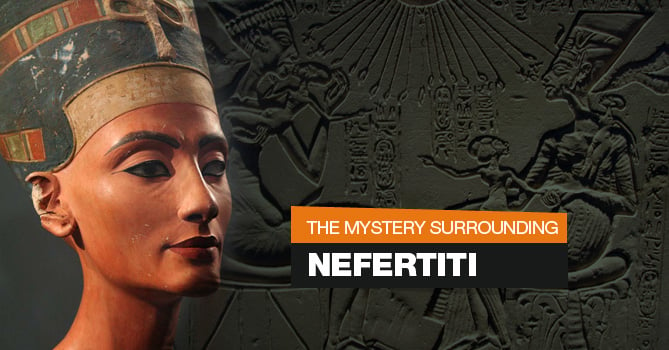Nefertiti is one of the greatest enigmas in history that archeologists and scientists from around the world have been trying to unravel. The ancient Egyptian queen, whose name implies “a beautiful woman has come” has puzzled archeologists who, for decades, have been trying to find out her final resting place and the causes of her disappearance. But now it seems that history’s biggest mystery may finally be solved as scientists have stumbled on a secret tomb, which is located behind that of Tutankhamun and may contain a few interesting answers. But who exactly was Nefertiti and why was the world in such awe of her?
Who was Nefertiti?
Nefertiti was the wife of Amenhotep IV, who was the Pharaoh of Egypt in the mid-1300s BC, and ruled Egypt along with her husband. Nefertiti was ravishingly beautiful as her name implied. But it was not only for her beauty that the Egyptian queen was known for. Nefertiti, along with her husband Amenhotep IV, brought about a major religious revolution in ancient Egypt. Aten, the Sun God, was the only one worshiped by the pharaoh and his queen.
Nefertiti’s reign lasted some 12 years after which she completely disappeared from the pages of history and the causes of her disappearance are shrouded in mystery as her mummified body has never been found. Theories range from the more plausible death of the queen to her becoming a co-regent under a new name.
But had it not been for a sandstone bust of the queen, Nefertiti would have remained hidden in obscurity. In 1913, a painted sandstone bust of the queen was rediscovered kindling human interest in Queen Nefertiti. The bust caught the attention of the archeologists and public alike and became a global image of feminine power and beauty.
Has Nefertiti’s resting place been finally found?
Back in 1922, Howard Carter and Douglas Berry made a grand discovery. The duo had discovered the tomb of Tutankhamun, the son of Amenhotep IV, who was also referred to as the Boy King. The discovery of his tomb was of great significance as it contained magnificent pieces of funerary goods and was the only tomb that was spectacularly intact and had a plan which made it different from the other tombs of the period.
Less than a century later, the Tutankhamun’s tomb is generating interest once again among historians and archeologists. And that is mainly due to Dr. Nicholas Reeves – a famous Egyptologist. Reeves had published a paper which showed that there were thin cracks in the decorative paintings on the walls. This suggested that behind the walls of this tomb were located rooms. But what really came as a shocker was Reeves’ contention that one of these rooms could be the final resting place of the elusive queen Nefertiti. In November 2015, the archeologist had analyzed high-resolution scans of the walls of King Tut’s grave. The archeologist claimed that he had found signs of doors that those who built the tomb must have blocked off. Reeves cited the size of the tomb, which he felt was small enough to appropriately fit the description of a final resting place of a pharaoh. Reeve’s contention was that the unusual size of the tomb and its layout indicated that it was an extension of an earlier tomb that was originally designed for a queen.
The world went into a tizzy when the Minister of Egyptian Antiquities Dr. Mahmoud el-Damaty released the results of the scans carried out in 2015. The news of the existence of the two hidden spaces or chambers was confirmed. It was also revealed that there was organic as well as metallic matter in the chambers indicating another burial site. Egyptian officials were a bit skeptical and declined to speculate on the queen remaining buried in the chamber. However, the Egyptian minister did not rule out the possibility of the rooms having the tomb of a member of the ancient Egyptian royal family.
A more advanced scan would be held by the end of March 2016 that would ascertain whether the empty spaces are really chambers. Only then the authorities will explore the possibility of a team entering the rooms.
What Could This Mean To the World?
The tomb can be a great find as it would provide us a rare insight into how ancient Egyptians managed their death, their culture and customs, apart from showcasing precious objects, unique creations, and remarkable texts. It would help the Egyptian tourism industry earn millions of dollars. It would become the century’s greatest discovery if the tomb is proved to be of Nefertiti’s. At the same time, it would also suggest that all this time the queen was right there in front of everyone’s sight though just hidden by a wall.
Read More:
